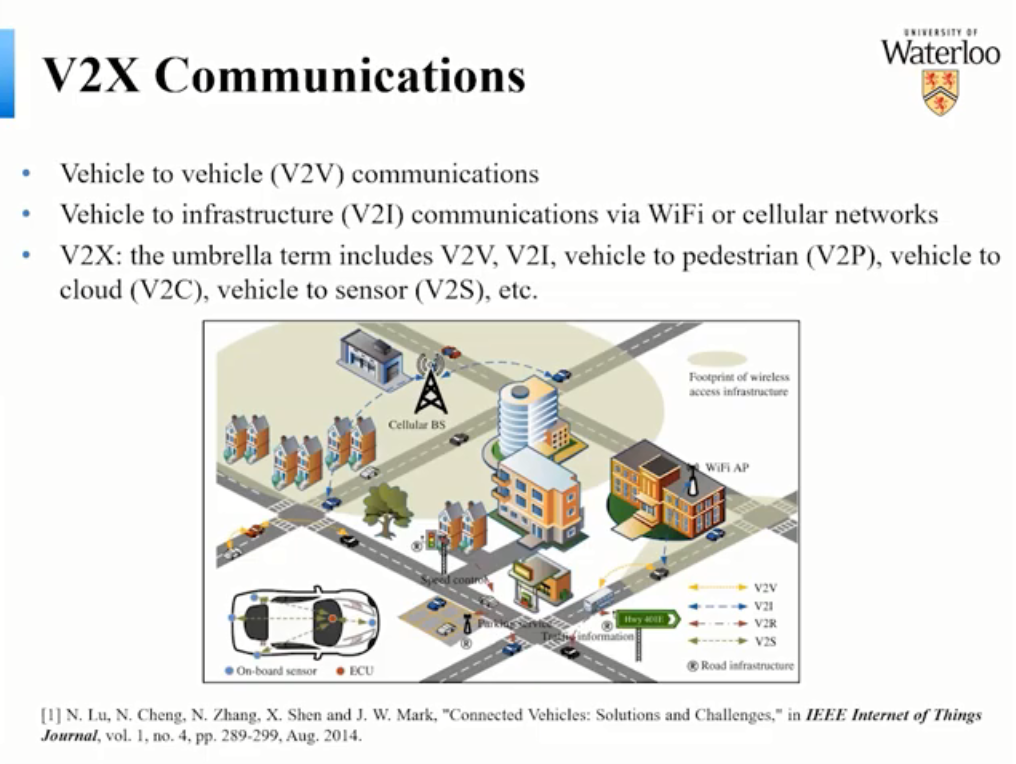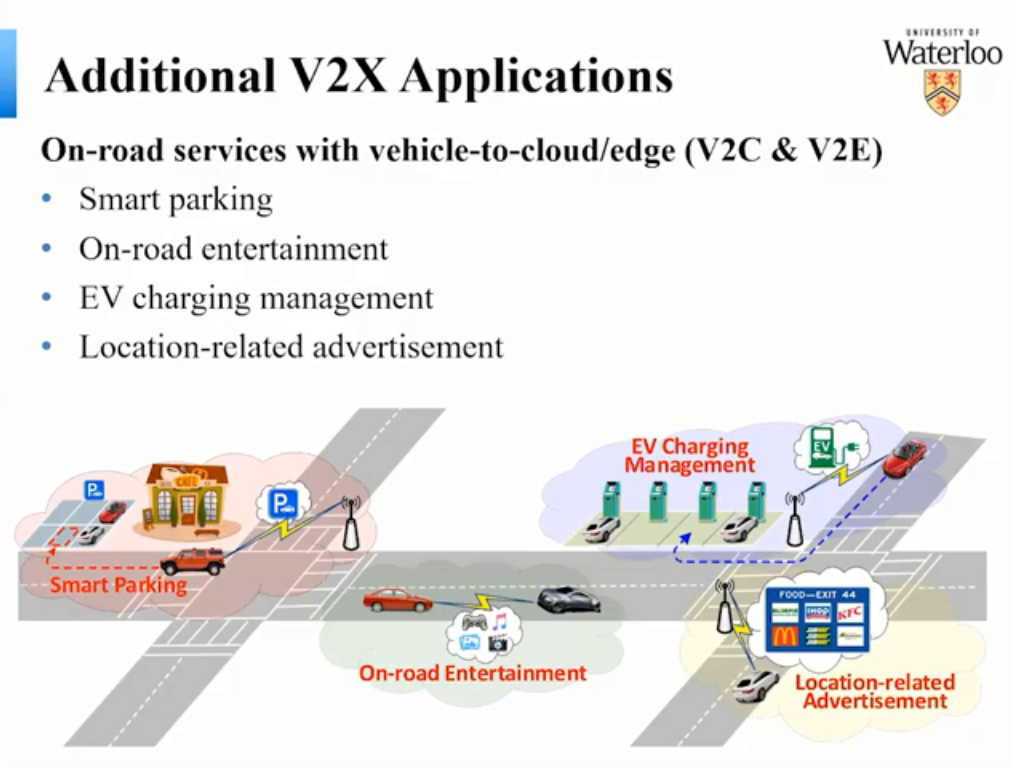Vehicle communication networks have attracted a lot of attention recently not only from academic field, but also from governments due to its significant impact on our daily life.
It is well known that the current challenges of transportation system are safety, congestion and environment. Global road traffic crashes account for 1, 2 million death per year, top the causes of death for ages 15-29, causes 3% of GDP loss for low/middle income countries. As for congestion, commuters waste 8 billion hours in traffic per year. Additionaly, due to an urban congestion there is $160 billion loss per year. The main challenge regarding the environment is that wasted fuel topped 3 billion gallons, in addition to 56 billion lbs. of additional CO2. Connected vehicles can become a potential solution for these challenges.

Watch Prof. Xuemin Shen’s Distinguished lecture below and find out more about how V2X (vehicle-to-everything) communications can help to make automated driving safer.
Vehicle-to-everything (V2X)
Road safety can be significantly enhanced with V2V (vehicle to sensor), for example with the use of blind spot, lane change or forward collision warning. As well as vehicle vs. pedestrian collision can be avoided with a help of V2P (vehicle to pedestrian) systems. Congestions can be relieved due to better traffic management, such as traffic light control, street light management and intersection movement assistance. Modern systems became more environmentally friendly, since vehicles spend less time on the road, so that less CO2 emissions are being released. Furthermore, V2X can bring additional applications as a part of on-road services, including smart parking, on-road entertainment, EV charging management, location-related advertisement.

V2X Challenges
V2X communications require a lot of wireless resource due to the large amount of data traffic. This occurs because V2X communications is typical heterogenous machine and human-type communications. Currently, each vehicle has above 5200 sensors and this number is expected to be doubled in the near future. The data traffic generated by sensors is arround 750MB/s/car. The human type data traffic keeps increasing due to the demand for on-road infotaiment and location-based services. Besides, high mobility of vehicles and unreliable channels make it difficult to satisfy the strict service requirements of different vehicular services.

Automated driving
Although automated driving technologies were highly developed in past years, automated driving still faces challenges from technical, vehicle and marketing aspects. Hardware limitations include: sensing range, clear weather, sight blocking. Software reliability comprises limited processing capability, constrained training data base. Legal and marketing issues include high price ($25 000 higher cost than conventional vehicle), loss of driver-related jobs and fun, liability of damage and ethic concerns.
Xuemin (Sherman) Shen is a University Professor, Department of Electrical and Computer Engineering, University of Waterloo, Canada. Dr. Shen’s research focuses on wireless resource management, wireless network security, 5G, and vehicular ad hoc and sensor networks. He was the Editor-in-Chief of IEEE IoT J, IEEE Network, and served as the General Chair for Mobihoc’15, the Technical Program Committee Chair for IEEE Globecom’16, IEEE Infocom’14, IEEE VTC’10, the Symposia Chair for IEEE ICC’10, the Technical Program Committee Chair for IEEE Globecom’07, the Chair for IEEE Communications Society Technical Committee on Wireless Communications.
The honorable Distinguished lectures program serves as an inspiration featuring great talks by the world’s most prominent researchers. Let us introduce to you our featured world’s top speakers presenting a topic as our distinguished guest lecturers.
Watch EAI’s previous Distinguished lecture – Prof. Sergio Matteo Savaresi on Personal mobility for smart cities: a glance into the future


